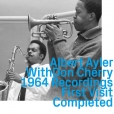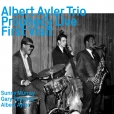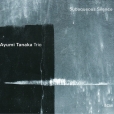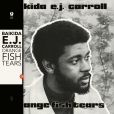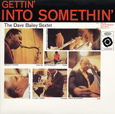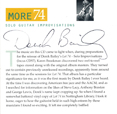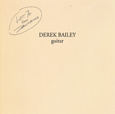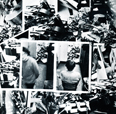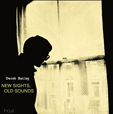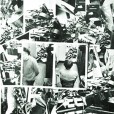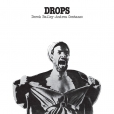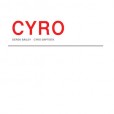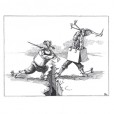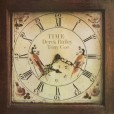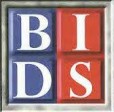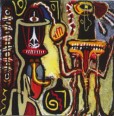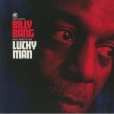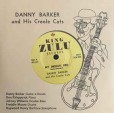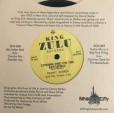Your basket is empty

With Don Cherry, Gary Peacock, and Sunny Murray.
Twenty-one recordings — including the Ghosts LP — from September and November 1964, in the wake of Spiritual Unity; live at Club Montmartre in Copenhagen, Denmark, and at a radio station in Hilversum, Netherlands.
Fierce, ecstatic, awe-inspiring music.
The pianist’s ECM debut, marking ten years of music-making in Norway; with double-bassist Christian Meaas Svendsen and drummer Per Oddvar Johansen.
‘There is an ascetic rigour in her playing, as well as a sense of space suggesting affinities with Japanese classical music. Ayumi views the trio as “more like a chamber ensemble. We share a flow of energy, even in silence.”’
Encouraged by the Art Ensemble of Chicago, the trumpeter Baikida Carroll upped sticks in 1972, moving from Missouri to Paris. He travelled with several colleagues from the Black Artists Group: saxophonist/flutist Oliver Lake, trombonist Joseph Bowie, drummer Charles ‘Bobo’ Shaw, and trumpeter Floyd LeFlore. Inevitably, they soon crossed paths with Jef Gilson, who invited Carroll to record for his young Palm label, in June 1974. Carroll brought along Lake, and the Franco-Chilean pianist Manuel Villaroel, from the group Matchi-Oul, which had already appeared on Futura in 1971. The lineup was completed by the great Brazilian percussionist Naná Vasconcelos, fresh from the triumph of his own debut LP as leader — the terrific Africadeus, for Saravah.
The first side is knockout: everybody plays a range of percussion and bells on the opener — its own iteration of space jungle love — embedding stately interventions by woodwind and brass; before the wildly funky free-jazz of Forest Scorpio, with raging saxophone and keyboard, and monster groove. The second half is thrillingly hybrid and one-of-a-kind: more reflective, intimate, and spaced-out — increasingly hallucinatory — with an improvisatory feel for dissonance and repetition which beckons Terry Riley and György Ligeti into the mix.
The original Palm artwork is scrupulously reproduced, and an eight-page booklet contains rare and previously unpublished photos. The more expensive LP is from an edition of just 175 copies, with see-through vinyl, and a silk-screened wraparound sleeve, numbered and signed by the artist Stefan Thanneur.
Hotly recommended.
Peck Morrison, Horace Parlan, Charlie Rouse, Curtis Fuller and Clark Terry. 1961.
Recently unearthed reel-to-reel solo improvisations from 1974, just as transfixing as the Incus milestone that year, Lot 74. Produced by Steve Beresford, this is terrific.
Three compositions — Mengelberg, Bryars and Breuker — and early-seventies improvisations.
1978 recordings on acoustic and electric guitar, originally released on vinyl that year by the Morgue label in Japan.
Recorded in 1971, Solo Guitar Volume 1 was Bailey’s first solo album. Its cover is an iconic montage of photos taken in the guitar shop where he worked. He and the photographer piled up the instruments whilst the proprietor was at lunch, with Bailey promptly sacked on his return.
The LP was issued in two versions over the years — Incus 2 and 2R — with different groupings of free improvisations paired with Bailey’s performances of notated pieces by his friends Misha Mengelberg, Gavin Bryars and Willem Breuker.
All this music is here, plus a superb solo performance at York University in 1972; a welcome shock at the end of an evening of notated music. It’s a striking demonstration of the way Bailey rewrote the language of the guitar with endless inventiveness, intelligence and wit.
At last, the vinyl reissue of this masterwork, adding two hitherto unreleased gems recorded solo for Charles Fox’s Radio 3 programme Jazz in Britain, in the same few months of 1980 as the stunning Aida performances.
The phrase ‘in the moment’ is often bandied about with reference to free improvisation, and indeed there’s no better way to describe Derek Bailey’s playing. The acoustic guitar is notoriously lacking in natural reverberation — notes barely hang in the air for a couple of seconds before they disappear — which explains the almost non-stop flow of new material in these stellar performances. Bailey knew from one split-second to the next exactly where to find the same pitch on different strings, either as a stopped tone or a ringing harmonic, and there’s never a note out of place. ‘He who kisses the joy as it flies,’ in the words of William Blake, ‘Lives in eternity’s sunrise’ — and this music is forever in the moment, constantly active but never gabby, kissing the joy.
One of the special pleasures of the BBC set is the guitarist’s own laconic commentary, a deliciously deadpan description of what he’s doing while he’s doing it — “I like to think of it… as a kind of music” — and the interaction between words and music is a particular delight. “You may have noticed a certain lack of variety,” he quips, while unleashing a furiously complex volley. Is it a coincidence that the final seconds recall the famous cycling fifths of the coda to Thelonious Monk’s Round Midnight? Surely not — for Bailey, like Monk, was a note man par excellence. And they’re both still alive and well in eternity’s sunrise.
This iconic LP was originally released by Incus in 1974. Recorded at a private house in Catford, south-east London, the side-long title track is a masterwork: a twenty-two-minute, starkly personal, freely expressive, itchily searching re-casting of orders of rhythm and sound into a new, quicksilver kind of affective and musical polyphony. Never mind the guitarist’s championing of ‘non-idiomatic improvisation’, the poet Peter Riley gets the ball rolling in his identification of the various hauntings of Bailey’s playing at this time: ‘mandolins & balalaikas strumming in the distance, George Formby’s banjo, Leadbelly’s steel 12-string, koto, lute, classical guitar… and others quite outside the field of the plucked string.’
The five pieces on side two were recorded back home in Hackney around the same time — with the exception of Improvisation 104(b), from the year before (and issued by Incus in its TAPS series of mini reel-to-reel tapes) — opening with ventriloquised guitar feedback, and taking in some cod banter about colleagues like Mervyn Parker, Siegfried Brotzmann and Harry Bentink.
Crucial.
When Cyro Baptista moved to New York in 1980 from his home city of São Paulo, he brought with him an arsenal of percussion instruments, including the cuica (friction drum), surdo (the booming bass drum associated with samba), berimbau (single-string bow with resonating gourd), and cabasas galore, in the next few years deploying them most notably in numerous ensembles curated by John Zorn, who helped set up this studio session in 1982.
As you might expect from someone whose infectious grooves have graced the work of Herbie Hancock, Astrud Gilberto and Cassandra Wilson, Baptista expertly fires off cunning polyrhythms, even traces of thumping samba, with restless fluency. Bailey the wily old fox skirts and eschews the bait, which is quickly conjured away and newly fashioned. The guitarist homes in on the delicious squeaks of the cuica and the twanging drones of the berimbau with truly awesome tonal precision. You could sing along if you wanted, after a caipirinha or two. And he gets almost as many different sounds from his instrument as Baptista can from his kit – check out the stratospheric plings and string-length fret-sweeps of Tonto, which sound more like a prepared piano than an acoustic guitar.
Wonders abound, from the berimbau/bent-string exchanges that open Quanto Tempo to the delightful collision of howling cuica and spiky bebop on Polvo, and the spare, preposterous Webernian samba of Improvisation 3.
These days, ‘improvisation’ often appears without its customary qualifier ‘free’. If there were ever a case to be made for its reinstatement, this album is the best supporting evidence. Freedom means you’re free to get into the groove, free not to, free to play with each other, free to play against each other. Sometimes frustrating, even scary, but more often than not in the hands of these two great masters it’s hilarious, exhilarating and utterly irresistible.
The tussling vegetables in Mal Dean’s cover-sketch somehow befit perfectly this extraordinary duo of Bailey and the great Dutch drummer Han Bennink. Recorded in London in 1972, Incus 9 was their second record (after an ICP in 1969), becoming a blueprint and inspiration for generations of free-improvisers. It is paired here with a brilliant session from the following year, with the same power and friendly combativeness, and oodles of creativity, technique and humour. It’s obvious how much they loved playing together.
Multi-reedist Tony Coe was born in 1934, four years after guitarist Derek Bailey. He cut his teeth as a career jazzman with Humphrey Lyttleton, before an extended stint with the Kenny Clarke/Francy Boland Big Band. On this rare 1979 duo outing, he sticks to clarinet. And though that instrument has an illustrious jazz pedigree, Coe’s playing here is something else.
It’s worth noting that the clarinettist has also played under the baton of arch-modernist Pierre Boulez, the kind of composer Derek Bailey enjoyed taking to task in his book Improvisation. You might think the Frenchman’s uncompromising serialism and the free playing Bailey defended with such passion all his life would have little in common, yet both men were hugely influenced by Anton Webern. It’s an influence you can hear right through Bailey’s career in his obsessive exploration of tight parcels of registrally-fixed pitches, notably those trademark ringing harmonics. Meanwhile, Coe’s meandering semitones and sinuous arabesques here recall both Boulez’s clarinet writing in Domaines, and the harmonic world of Boulez’s own teacher Olivier Messiaen.
Still, no traditional classical musical notation could ever render the extraordinary rhythmic subtlety and timbral complexity of this music. It’s at one and the same time dazzlingly virtuosic — Coe and Bailey are on stellar form throughout, and have enough sense to, yes, accompany each other where needs be — and supremely lyrical and spacious.
An absolute delight.
Born in Burlington, Vermont, and conservatory-trained in the US, the cellist Tristan Honsinger moved from Montreal to Amsterdam in 1974, quickly linking with Han Bennink and Misha Mengelberg, and opening a long and fruitful musical relationship with Derek Bailey. Recorded in 1976, Duo displays a performative musical approach already characterised by the lack of inhibition which would later endear him to The Pop Group: he is knockabout, exclamatory, explosively rhythmic; burping Bach and folk melodies with spasmodic lyricism, in amongst the garrulous textures and accents of his scraping, bowing and plucking, and gibbering like a monkey; throwing out his arms and stamping the floor, grappling with his instrument like an expert clown, always on the lookout for new ways to trip himself up. You can hear Bailey revelling in the company, as he ranges between scrabbling solidarity and an askance skewering of his partner’s antics, on prepared (nineteen-string) and standard electric guitars — and a Waisvisz Crackle-box, for the garbled, quizzical, cross-species natter which closes The Shadow. Throughout, the spirited interplay between laconic, analytic wit and guttural, sometimes slapstick physicality is consistently droll, often laugh-out-loud funny; vigorously alert, alive and gripping.
Percussionist Jamie Muir was a member of King Crimson during the recording of Larks’ Tongues In Aspic, in 1973. Staying less than a year with Robert Fripp, the Scot had already cut his teeth with another master guitarist, Derek Bailey, as part of the Music Improvisation Company, along with Evan Parker, Hugh Davies and Christine Jeffrey, whose eponymous 1970 album was one of the first releases on ECM. Muir and Bailey recorded Dart Drug eleven years later, in 1981.
There’s no shortage of great percussionists in the brief history of free improvised music but on the strength of Dart Drug alone Jamie Muir deserves a place at High Table. Unlike for example Han Bennink and John Stevens, though, you can’t hear echoes of any particular jazz drummer in Muir’s playing, even if he has expressed appreciation for Milford Graves (who himself sounded like nobody else who’d come before him).
What on earth did Muir’s kit consist of? Some instruments are clearly identifiable (bells, gongs, chimes, woodblocks); others could be… well, anything. Old suitcases thwacked with rolled up newspapers? Tin cans and hubcaps inside a washing machine? Who cares? It sounds terrific – but if you’re the kind of person who faints at the sound of nails scraping a blackboard, you might want to nip out and put the kettle on towards the end of the title track.
Dart Drug is consistently thrilling, and often very amusing – but it’s certainly not easy listening. In music we talk about playing with other musicians, whereas in sport you play against another opponent (or with your team against another team). Why not play against in music, too? That’s precisely what happens very often in improvised music, and Bailey was particularly good at it. How can a humble acoustic guitar hope to compete with a Muir in full flight? Sometimes Bailey’s content to sit on those open strings, teasing out yet another exquisite Webernian constellation of ringing harmonics and wait for the dust to settle in Muir’s junkyard, but elsewhere he sets off into uncharted territory himself.
“The way to discover the undiscovered in performing terms is to immediately reject all situations as you identify them (the cloud of unknowing) – which is to give music a future.” Bailey evidently concurred with this spoken statement by Muir, including it in his book Improvisation.
Derek Bailey is no longer with us, of course, and Muir gave up performing music back in 1989. All the more reason for seeking out this magnificent, wild album.
Very hotly recommended.
The violinist’s first solo record, originally released on Hat Hut in 1980. A mixture of his own compositions, extrapolated at length in an intimate live concert, as well as traditional and improvised material. Remastered from original tapes and augmented by newly discovered recordings from the same concert. Great to hear Giuseppi Logan on here, briefly in from the cold.
